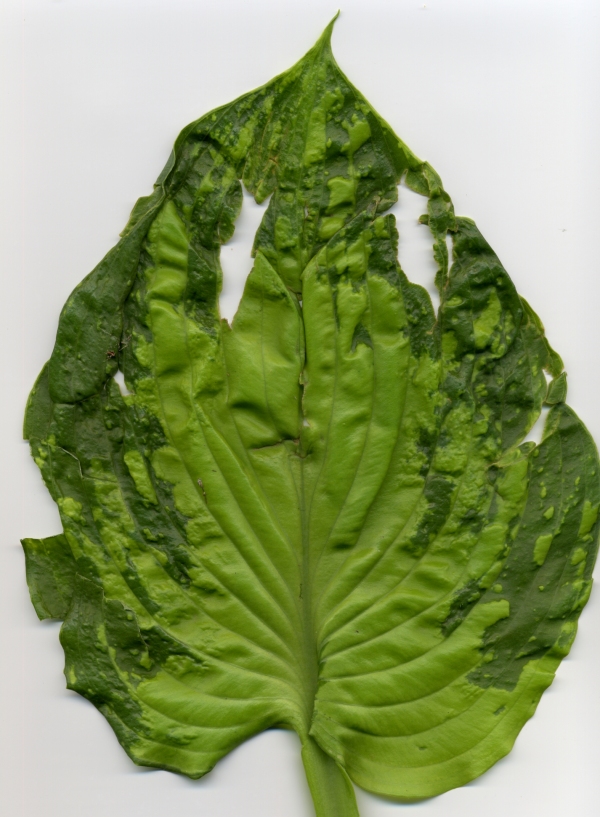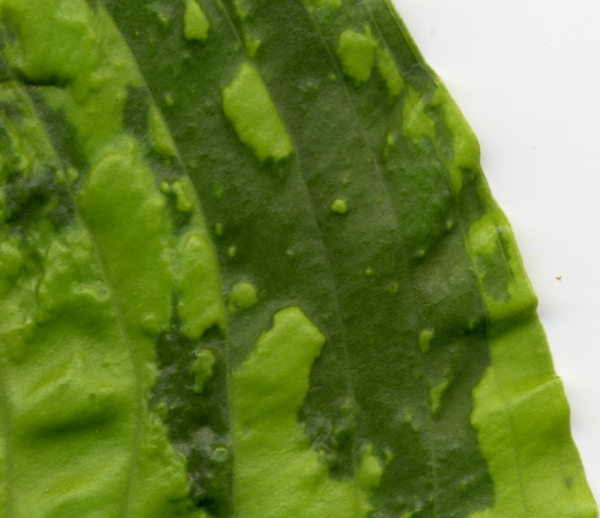Hosta Virus X
Causal Agent
HVX
Hosts

Symptoms
Hosta Virus X affects different hosta cultivars in different ways, so it is impossible
to give a definitive 
Growers should submit plants with suspicious symptoms to the Plant Disease & Insect Diagnostic Lab for ELISA antibody testing. While ELISA tests for Hosta virus X are not 100 percent accurate, they represent the most practical testing procedure currently available and will detect the virus in most infected plants.
Control
There is no practical cure for this virus. The best way to prevent Hosta Virus X is to not grow infected plants. This virus is transmitted primarily through cutting the plants. Contact of the infected plant's sap with sap of a healthy plant will infect the new plant. This can happen whenever cuts are made and the instruments or hands are not disinfected afterwards. Tools should be dipped in 10 percent bleach solution and hands washed thoroughly between working on each plant. Plants in pots may be simply disposed of or burned. Plants in the ground should be dug carefully as to get as many roots as possible, and the spot should not be replanted until any remaining roots have died and rotted away. Always avoid strangely spotted or mottled plants you find at nurseries. Not all infected plants show visible symptoms, though, so if one plant in a group shows symptoms do not buy healthy-looking plants in the same group. If one has it, it is very possible some, and maybe all, of the others do.
